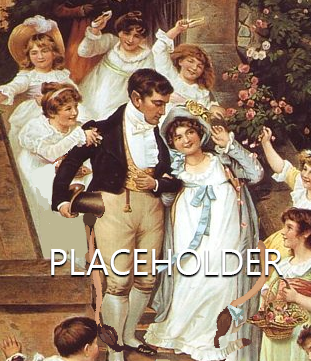Halfling
Halflings, also known as the Good Folk, are the shortest humanoids in the realm. They are widespread, and their strong sense of hospitality helps them build a home wherever they find themselves. The halflings arrived by ships sometime during the first century of the Written Era, and spread all across the continent before the end of the next.
Halfling hospitality extends beyond the home. Being a good neighbour and a good citizen is seen as just as important as being a good host. The good folk encourage the inate sense of justice in their children, teaching them from a young age to recognize the needs of others and alleviate their discomfort. To a halfling, good manners is about seeing things from the perspective of another and having a good time together, not about strict adherance to rules of etiquette.
Appearance
Halflings are usually around three feet tall. They have a stocky build similar to that of the dwarves, and slightly pointed ears. Traditional halflings prefer the sort of body that comes from a life well lived, with good food and good company. Joyous wrinkles are celebrated, and there's a firm belief that any hardworking soul needs a bit of padding.Culture
If there's room in the heart, there's room in the home.
Halfling hospitality is reknowned. Not long after you've stepped foot into a family home will you find the table decked with so much food that the legs of the table are at risk of buckling, a bed made up and warmed with cantrips, and a fire crackling. Halflings view hospitality as the foundation of good society.
It is not uncommon to hear this culture of hospitality disparaged. Humans and dwarves may muse that the halflings fawn over their neighbours to win their protection, while Elves consider the halflings to be unrefined.
Despite this, the halfling concepts of what makes a good host have spread just as far as the halflings themselves. Taverns and inns, no matter who runs them, all operate on the halfling principles of hospitality.
Elements of a Gracious Host
- A bowl and pitcher of water, so the guest may wash off the grime of the outdoors.
- A crackling fire, so guest may warm themselves.
- A table full of earthly delights, so the guest may fill their stomach.
- An instrument and a tune, so the guest may enjoy themselves.
- An airy pillow upon a fresh-made bed, so the guest may rest.
Cuisine
Halfling cuisine is often dismissed as peasant food, but a surprising amount of popular dishes and desserts have halfling origins. Halfling cuisine may use simple, local ingredients, but their food is rich and flavourful. No meat goes unmarinated, no pastry unsweetened. Those who dine at a halfling table are often awed by the array of labour-intensive side dishes and desserts the halflings seemingly conjure out of nowhere. Halflings, however, have a trick up their sleeves. Rather than making everything themselves and storing it for ages, like the dwarves might, the Halflings cook up far more than they could ever eat and trade their extras with their neighbours. This allows them a table full of diverse and tasty treats. This exchange of pots of food encourages most halfling home cooks to hone their skills. After all, noone wants the embarrassment of having saddled the entire neighbourhood with something completely inedible. The drive to impress their neighbours encourages innovation as well.History
The Good Folk arrived by ship sometime during first century of the Written Era. There are many theories as to where they originated, but not even the halflings know for sure. These halfling ships were wonderously well-constructed, and enchanted with magics that have yet to be replicated. The design completely revolutionized shipmaking, enabling long-distance travel by sea. Only one of the ancient halfling ships is known to survive, currently preserved at an Argosian Museum of Shipcraft.Halfling
| Species | Humanoid |
|---|---|
| Lifespan | Between one and two centuries. |
| Total population | |||||||||||||||
|---|---|---|---|---|---|---|---|---|---|---|---|---|---|---|---|
7 600 000 | |||||||||||||||
| Regions with significant populations | |||||||||||||||
| |||||||||||||||
| Languages | |||||||||||||||





Comments